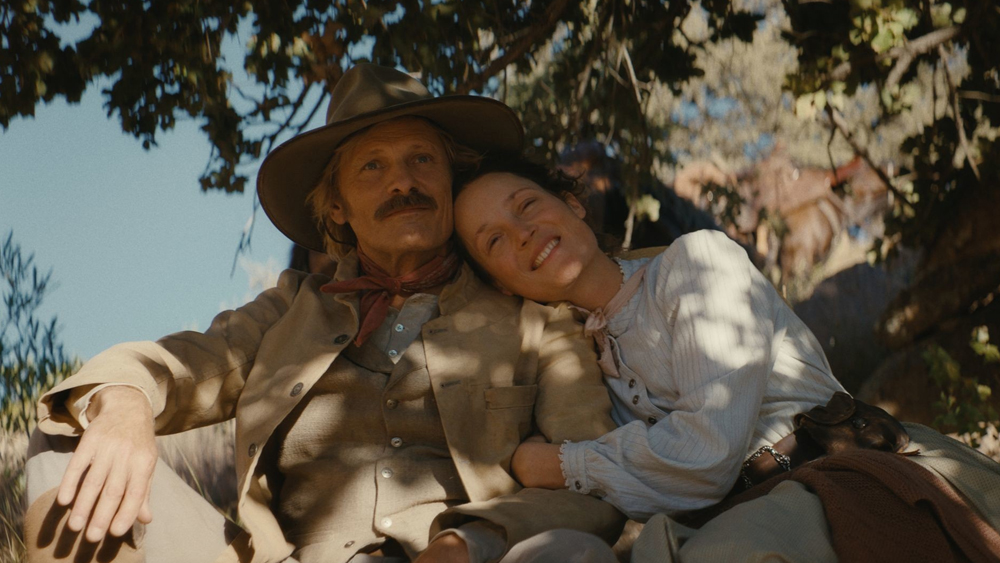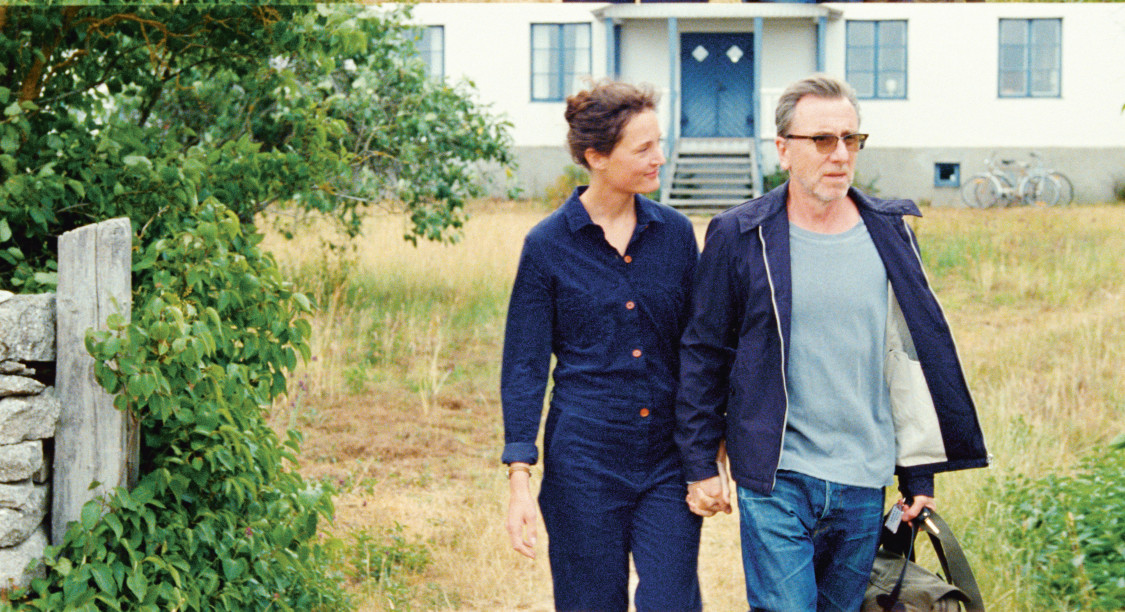The Dead Don’t Hurt
by Brandon Thomas
Leave it to Viggo Mortensen to deliver a western that both cherishes and upends western tropes. Mortensen has made a career of surprising his fans and critics. Even his casting as Aragorn in The Lord of the Rings trilogy was seen as a major surprise and curveball at the time. So it really should come as no surprise that when he directs his first western, it doesn’t quite follow the typical trajectory.
In The Dead Don’t Hurt (what a great western title, huh?) Mortensen plays Holger Olsen, a stoic cowboy and immigrant from Northern Europe. On a trip to San Francisco, Holger meets Vivienne (Vickey Krieps of Phantom Thread) and the two form an instant connection. Vivienne leaves San Francisco with Holger for his home outside of a ragged desert town. As the Civil War breaks out in the east, Holger leaves his home and Vivienne to assist the Union in the New Mexico and Texas territories. With Holger gone, Vivienne finds herself alone in an alien environment and surrounded by many unscrupulous individuals.
Westerns have always focused on the extremes of masculinity. Mortensen seems especially interested in tackling the mixture of manhood, dignity, and misplaced duty. As the “good guy”, it’s interesting to see Holger make decisions that on paper seem noble or righteous, but to his family – especially Vivienne – is seen as complete abandonment. It’s a not-so subtle comment that during this time, even the most well-intentioned men were willing to put the women in their life at risk if there was an even greater risk to their manhood.
Mortensen surrounds himself and Krieps with an excellent supporting cast that includes Garret Dillahunt (No Country for Old Men, The Assassination of Jesse James by the Coward Robert Ford), Danny Huston (Children of Men, 30 Days of Night), and W. Earl Brown (Scream, TV’s Deadwood). This isn’t an overly action-filled western, and so much of the excitement from the film comes from these fine actors bouncing off of one another.
Visually the film feels right at home in the genre. While not reaching the heights of say The Searchers or Once Upon a Time in the West, Mortensen and his cinematographer Marcel Zyskind have clearly set their sights on something “bigger” than the budget would suggest. There’s a classical look to the shot design and staging that doesn’t scream “modern digitally shot low-budget film!”.
The Dead Don’t Hurt does lose steam as the story reaches its conclusion. While the performances and technical prowess don’t suffer, Mortensen’s script loses focus and instead of ending with a definitive period, the story ends with more of a confused question mark. The disappointment at the finish line is made stronger by how successful the film is up until those final 10 to 15 minutes.
Viggo Mortensen has crafted an interesting and original take on the great American western with The Dead Don’t Hurt. While it doesn’t quite reach the heights of even modern takes on the genre such as the Coens’ True Grit, it is a fascinating film from an exciting and hard to pin down artist.







